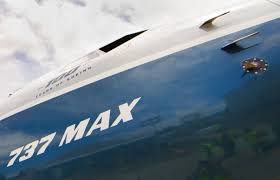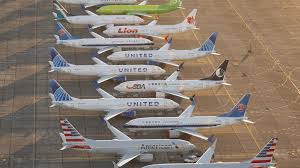Boeing’s 737 MAX Scandal: A Review of Boeing’s Deception of the FAA (Part II of III)

Boeing’s criminal conduct, as described in the settlement papers, centered on two of its 737 MAX Flight Technical Pilots, who deceived the FAA about an important aircraft part called the Maneuvering Characteristics Augmentation System (MCAS) that impacted the flight control system of the Boeing 737 MAX.
Because of their deception, a critical document published by the FAA lacked information about MCAS, and in turn, airplane manuals and pilot-training materials omitted information about MCAS. The two tragic plane crashes were the result of the MCAS system and the failure to ensure awareness of and training for use of the MCAS in certain flight situations.
The two employees have not yet been charged criminally for their conduct. Given the focus on these two pilots and the basis for Boeing’s admission under the doctrine of respondeat superior, it is surprising that the two pilots have not been charged individually for their criminal conduct. DOJ may intend to indict the pilots; if the pilots are not charged, such an omission would raise serious questions as to DOJ’s resolution of this significant fraud case.

Boeing began to develop the 737 MAX in June 2011. In order to operate the 737 MAX, the FAA was required to approve the airplane for commercial use. To make this decision, the FAA had to determine (i) whether the airplane met U.S. federal airworthiness standards; and (ii) what minimum level of pilot training would be required for a pilot to fly the airplane for a U.S.-based airline. These two determinations were made by entirely different groups within the FAA.
The FAA Aircraft Evaluation Group (“AEG”) was principally responsible for determining the minimum level of pilot training required for a pilot to fly the airplane for a U.S.-based airline. To make that determination, the FAA AEG compared the new version of the 737 MAX to a prior version of the airplane to determine what level of training would be required for pilots to operate the new 737 MAX.
The FAA AEG assigned a specific training range from “Level A” through “Level E,” with Level A being the least intensive and costly and Level E being the most intensive and costly. For example, Level B training required computer-based training, which could be completed from any laptop anywhere, and Level D training required flight-simulator training, which required buying multi-million dollar equipment and required pilots to take time from flying to train on costly flight simulator equipment.
The FAA’s evaluation of the new airplane training requirements published in a Flight Standardization Board Report (“FSB Report”). The FSB Report contained relevant information about certain airplane systems and parts that had to be incorporated into manuals and pilot-training materials.

Boeing’s 737 MAX Flight Technical team was responsible for identifying and providing the FAA AEG all relevant information in connection with the publication of the 737 MAX FSB Report. This group was separate from the Boeing group that provided information to the FAA to determine airworthiness.
Employee 1 was a Technical Pilot and eventually became the Chief Technical Pilot. Employee 1 left Boeing in 2018. Employee 2 was a Technical Pilot and became Chief Technical Pilot in 2018 after Employee 1 left Boeing. Employee 1 and Employee 2 conspired to defraud the FAA AEG relating to its 737 MAX FSB Report and its difference-training determination for the Boeing 737 MAX.
Boeing’s objective was to secure an FAA determination to require no greater than Level B training. Employee 1 and 2 shared this objective and knew they would be blamed if they did not secure Level B or better training.
The 737 MAX used larger engines than prior models, which altered relevant aerodynamics of the 737 MAX. To fix the impact of this change in maneuverability, Boeing developed the MCAS system to cause the airplane’s nose to pitch down during a specific high-speed, wind-up turn. During a 2015 briefing of the FAA AEG, Employee 1 described MCAS as needed had limited operational scope during a specific maneuver.
Subsequently, Boeing expanded MCAS’s operational scope, including the speed range from high-speed flight to nearly the entire speed range for the 737 MAX, and landing and take-off speeds. Boeing disclosed this change to the FAA staff involved in determining airworthiness but Employee 1 and 2 did not inform the FAA AEG personnel for publishing 737 MAX FSB Report and making the training-related determination.

In 2016, the FAA AEG reached a preliminary Level B determination but was unaware of the full scope of MCAS’s operational scope. Employees 1 and 2 congratulated the internal team and knew that the determination was based on the FAA’s misunderstanding concerning the scope of the MCAS system.
On November 15, 2016, during a test flight in a simulator, Employee 1 recognized the MCAS operating at a lower speed and that this was different from the representation made to the FAA AEG. In an internal electronic chat, Employee 1 and 2 discussed the test flight and how it was different from what they had told the FAA.
Employee-1: Oh shocker alerT! [sic] / MCAS is now active down to [Mach] .2 / It’s running rampant in the sim on me / at least that’s what [a Boeing simulator engineer] thinks is happening
Employee-2: Oh great, that means we have to update the speed trim description in vol 2
Employee-1: so I basically lied to the regulators (unknowingly)
Employee-2: it wasn’t a lie, no one told us that was the case
Rather than sharing information about this change with the FAA AEG, Employee 1 and 2 concealed this information and deceived the FAA AEG about MCAS. As a result of this deception, the FAA deleted all information about MCAS from the FSB Report, airplane manuals and pilot training materials. Pilots flying the 737 MAX were given no information, training or materials relating to MCAS, despite the fact that the MCAS system operated at the full range of 737 MAX speeds, especially at take-off and landing speeds.

On October 29, 2018, the Lion Air Flight 610 crashed after takeoff into the Java Sea killing all 189 passengers and crew. Following the crash, the FAA AEG learned that MCAS activated during the flight and may have caused the crash. The FAA AEG learned for the first time about the change to the MCAS, including the information Boeing concealed from the FAA. Employees 1 and 2 continued to mislead others at Boeing and the FAA about their prior knowledge of the change to MCAS.
Five months later, on March 10, 2019, Ethiopian Airlines Flight 302 crashed shortly after takeoff, killing all 157 passengers and crew on board. The FAA AEG learned that MCAS was activated during the flight. Three days later, Boeing’s 737 MAX was grounded.















